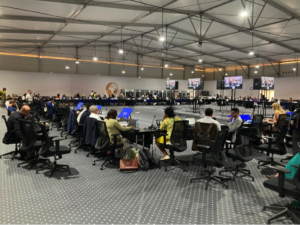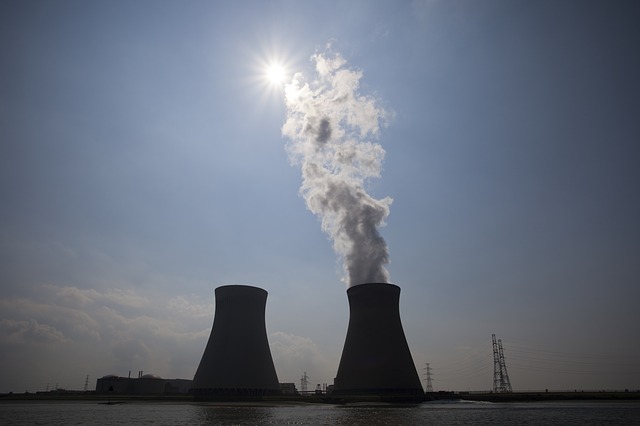At the 27th meeting of the Conference of the Parties to the United Nations Framework Convention on Climate Change (COP 27) in Sharm el-Sheikh, Egypt, delegations are hard at work determining the contours of how nations should prepare for climate change. A key focus has been on the Global Goal on Adaptation.
Article 7.1 of the Paris Agreement establishes a “Global Goal on Adaptation” (GGA), committing Parties to the tasks of “enhancing adaptive capacity, strengthening resilience and reducing vulnerability to climate change, with a view to contributing to sustainable development and ensuring an adequate response in the context of the temperature goal.” The Paris Agreement is, however, notably silent on what this “global goal” actually is. Adaptation encompasses a staggering array of activities at the local, regional, national and international scale which cut across sectors and borders. A floodwall, a crop insurance scheme, and a pandemic prevention program can each be adaptation, and there may be material tensions and tradeoffs between different adaptation measures. In short, comparing and categorizing climate adaptation measures can be incredibly challenging.

Since the Paris Agreement was signed in 2015, officials, academics, and civil society members have put forward different visions of the GGA. At COP26 in Glasglow in 2021, the parties tasked subsidiary groups with carrying out a two-year “Glasgow-Sharm el-Sheikh Work Programme on the Global Goal on Adaptation,” designed to clarify and quantify the GGA. Four GGA workshops were held between June and November of 2022, focused on (1) goal-setting methodologies, (2) barriers to adaptation and related data gaps, (3) adaptation measurement techniques and metrics, and (4) existing and proposed methods for reporting and communicating on adaptation.
With this groundwork laid, negotiations at COP 27 have focused on one central dynamic. In the first week of COP 27, developing country groups pushed for the parties to establish a concrete framework for the GGA this year. The developing country proposal consists of a multidimensional framework, which proposes to track adaptation progress by applying a set of cross-cutting considerations across multiple thematic areas like “terrestrial and freshwater ecosystems,” “food and agriculture,” and “settlements and infrastructure,” and examining multiple dimensions of adaptation, including planning, implementation, finance, and capacity-building. Zambia, on behalf of the African Group of Negotiators (AGN), also pushed for the adoption of specific (if broad) metrics for the GGA. Proposed metrics included, among other measurements, a target of 100% of the global population having access to early warning systems by 2025 and 100% of countries developing adaptation plans by 2030.
In contrast, several developed countries, including the European Union and the U.S., have questioned the need to implement a comprehensive framework at this time. These countries have advocated for another year of work before any GGA framework is established, and proposed a broader approach based on the adaptation policy cycle, “which encompasses risk and vulnerability assessments, planning, implementation, and monitoring and evaluation, and learning.”
This tension continued in meetings of the subsidiary bodies during the first week of COP27, and culminated on Friday (November 11) with the adoption of draft conclusions acknowledging the subsidiary bodies’ inability to agree on an outcome and bringing the issue to the attention of the conference Presidency. By Wednesday (November 16) Zambia’s proposed firm metrics had fallen out of negotiations, and parties remained divided on whether to leave COP 27 with a GGA framework or delay for another year.
One reason for the tension in these negotiations is that the GGA has become a strategic front in a broader struggle over climate change finance. At COP 15 in Copenhagen in 2009, developed countries pledged to direct at least $100 billion USD per year in climate finance to developing countries by 2020. That promise has been broken; an OECD study published in September of 2022 found that, as of 2020, developed countries had mobilized only $83 billion per year. A recent study by the UN Environment Programme (UNEP) concluded that even if the $100 billion pledge had been fulfilled, it would be woefully inadequate. According to UNEP, “[i]nternational adaptation finance flows to developing countries are 5-10 times below estimated needs,” which could be as much as $340 billion per year by 2030 and $650 billion per year by 2050.
Many developing country delegations see the GGA as a crucial tool to pressure richer nations to deliver on their climate finance promises. In an interview prior to COP27, the current Chair of the AGN, Ephraim Mwepya Shitima of Zambia, made it clear that many delegations see concretizing the GGA as a key step to securing adaptation financing. While it has received less emphasis in negotiations, many also see a comprehensive and nuanced GGA as a way to monitor intra-country disparities in access to climate adaptation resources, which can be at least as stark as wealth disparities between countries. This stance has only intensified throughout the COP, and in “Head of Delegation” negotiations on Thursday (November 17) developed and developing countries once again clashed over the scope, scale, and speed of a potential GGA framework. With less than 48 hours left of COP 27, however, it remains unclear if the conference will conclude with a GGA framework or if adaptation measurement will be kicked down the road to COP 28 and beyond.
Martin Lockman is the Climate Law Fellow at the Sabin Center for Climate Change Law






